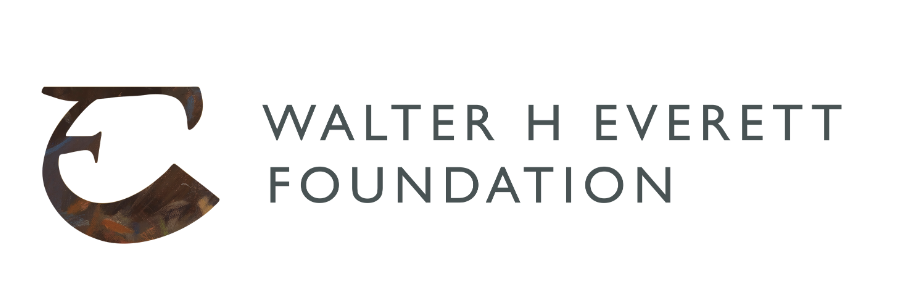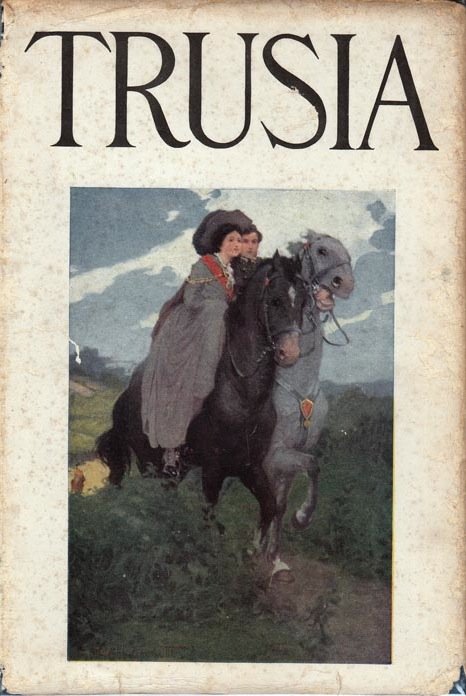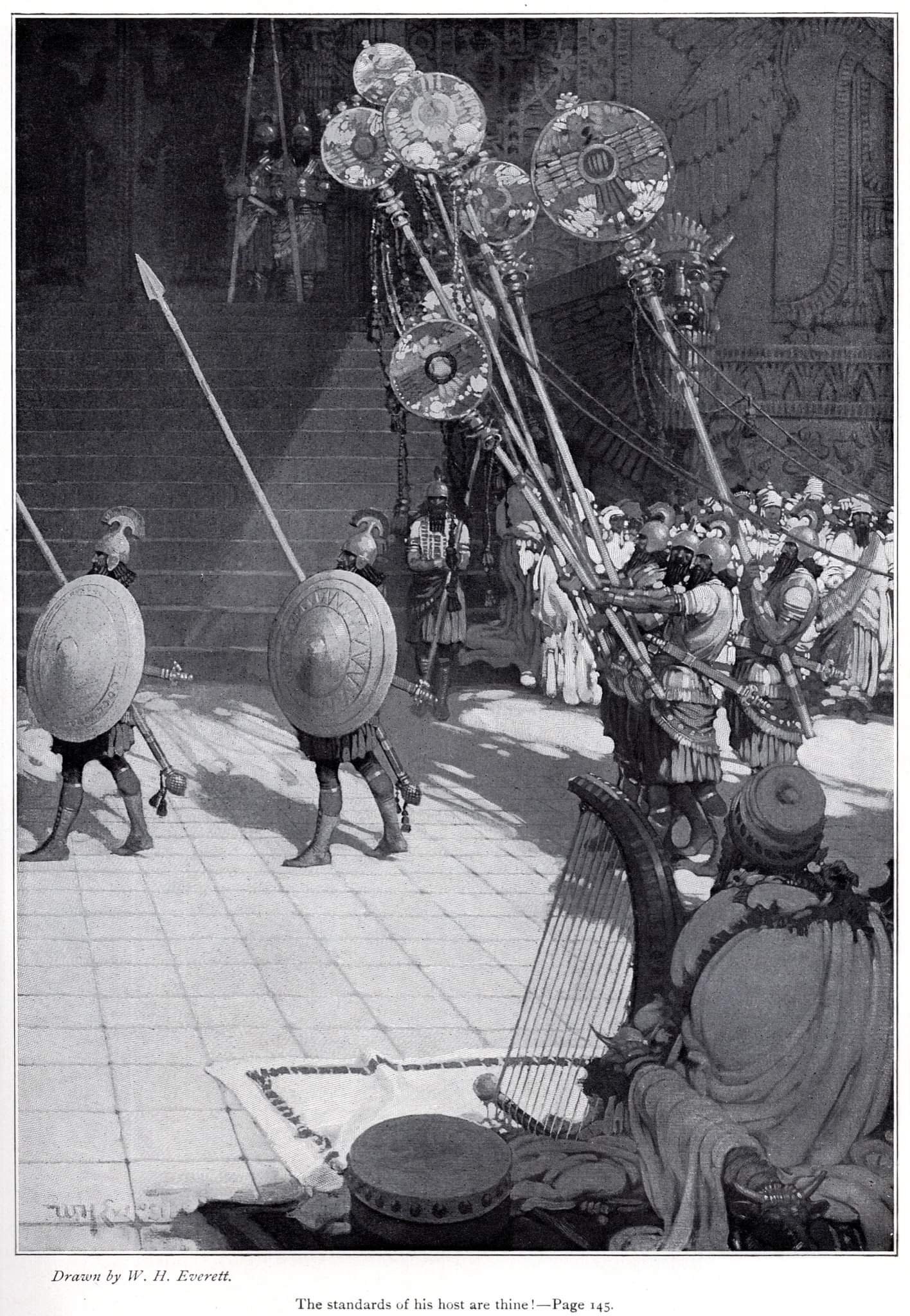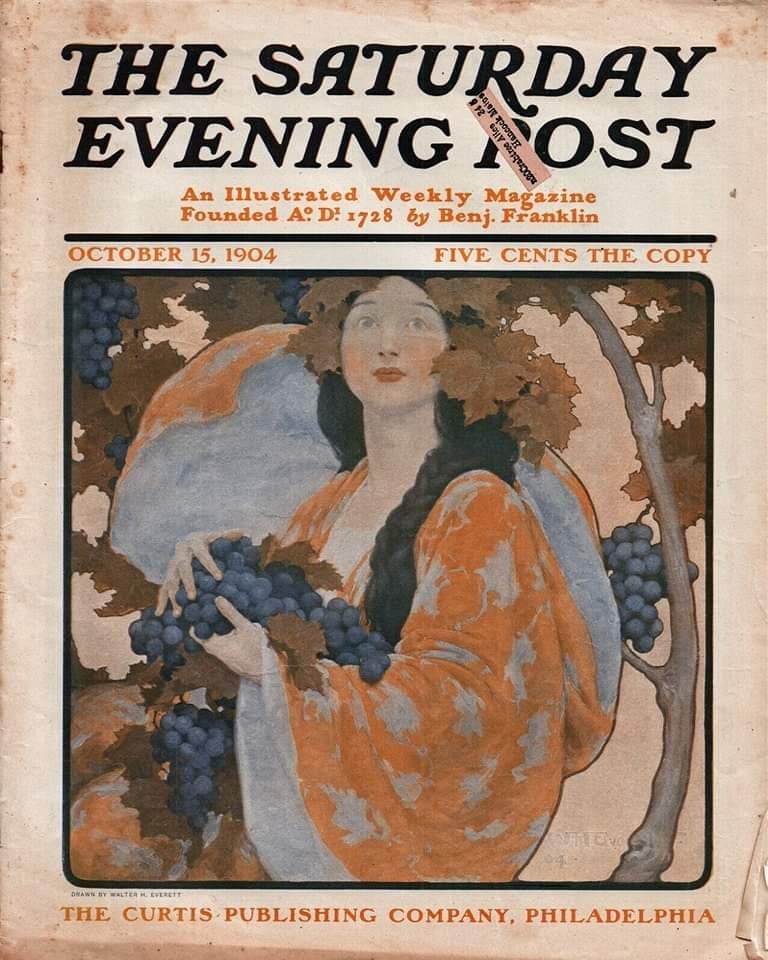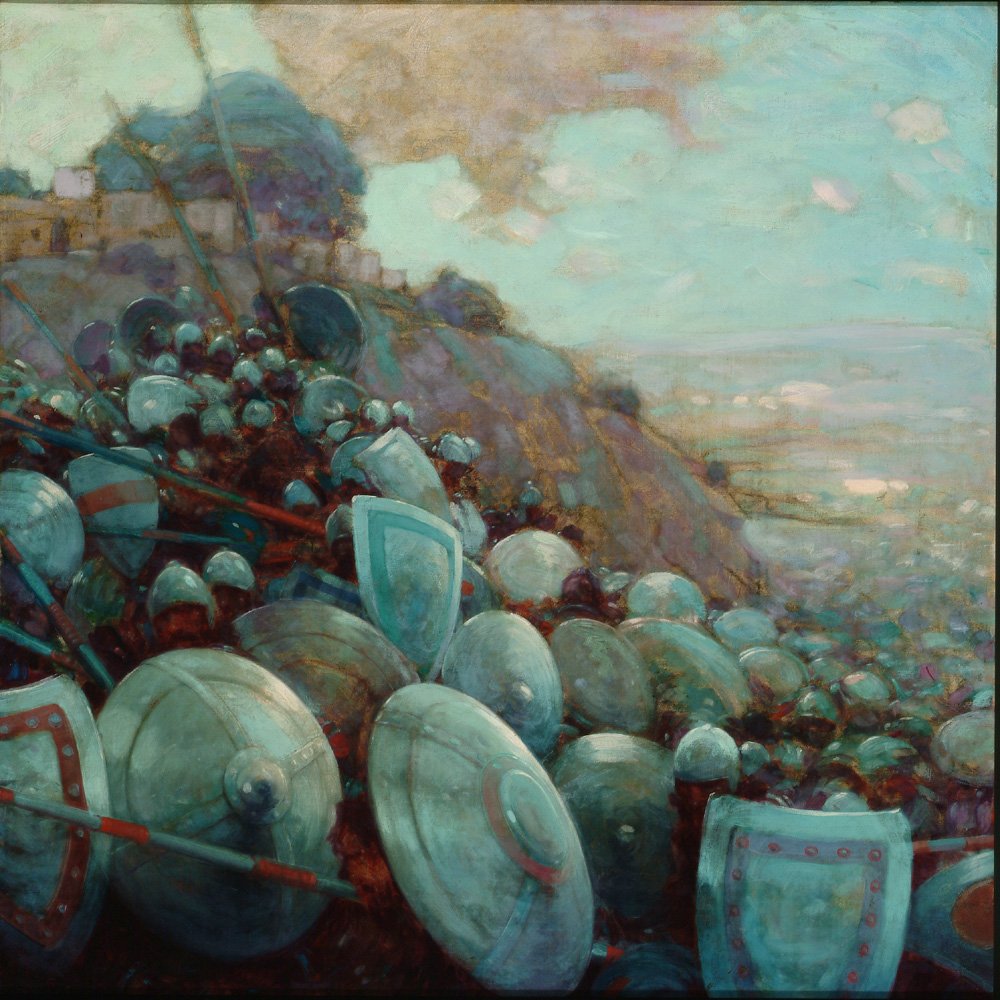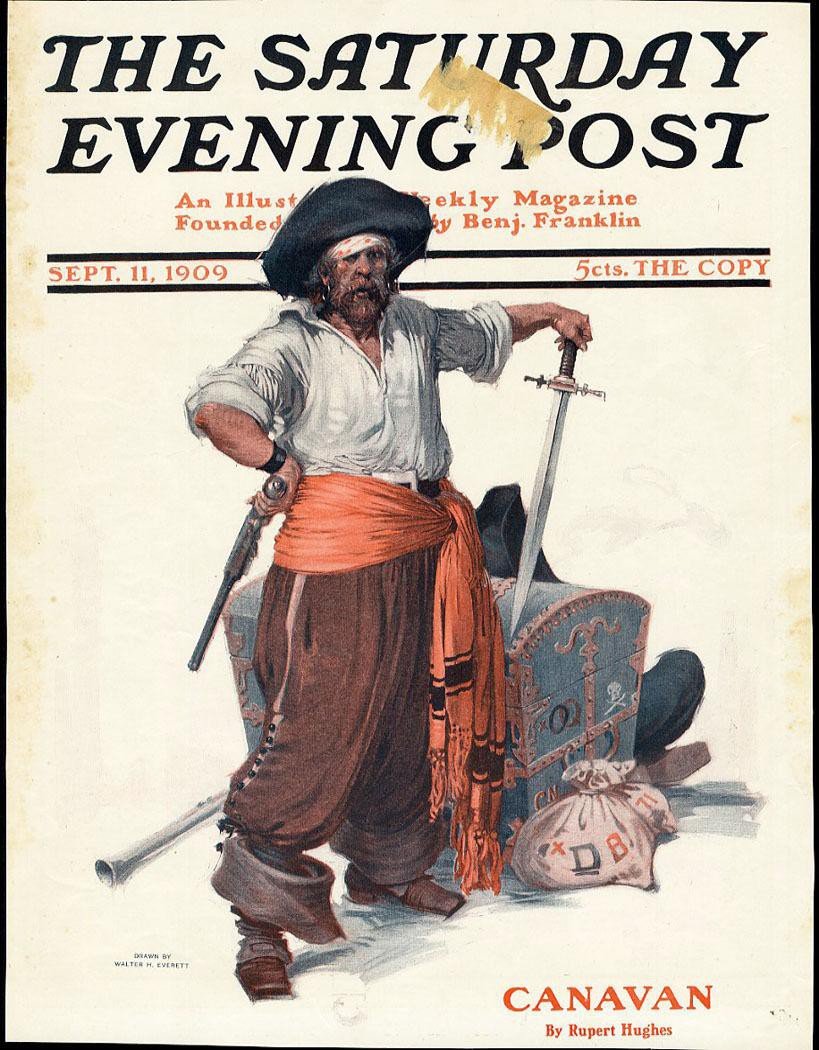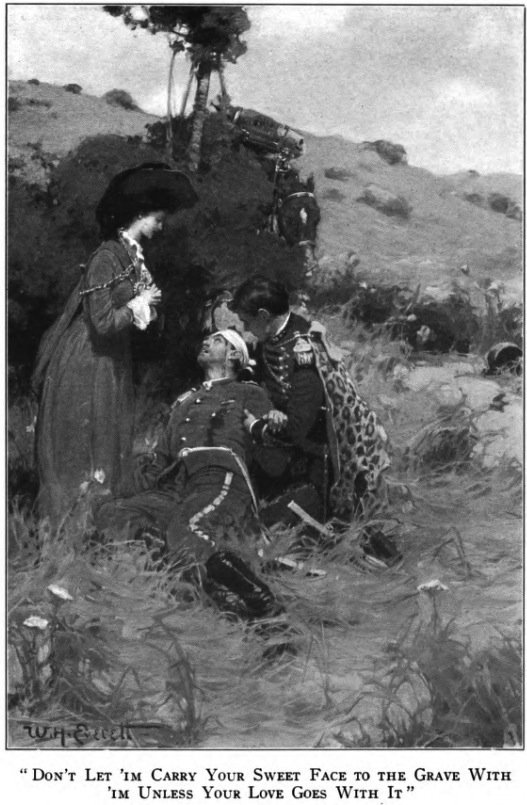Part 1: Master and Apprentice (1900 - 1910)
By Kevin Ferrara
Walter Hunt Everett was born in the trolley town of Haddonfield New Jersey in 1880; at the dawn of what came to be called The Golden Age of American Illustration.
Even in early childhood Everett showed a fascination for artistic depiction; filling notebooks with precocious drawings of animals and outdoor scenes. While still a teen, he became a prize-winning student at the prestigious Pennsylvania Museum & School of Industrial Art (PMSIA). 1 But though that rigorous technical school gave him much needed skill for the burgeoning commercial art field of the day, Everett was at heart a poet and a dreamer; and to make a profession of that entailed a different kind of training entirely.
If any one man could be said to best represent The Golden Age of American Illustration it was Howard Pyle. A national cultural force, Pyle was not only the top illustrator of his day and a pioneer in the field – at a time when fine art and illustration were essentially one – he was also a teacher who trained and ushered into his heady and popular field many of the top young talents of the subsequent era.
Everett entered all three of Pyle’s popular illustration classes at Drexel University in the Fall of 1899.2 And there he found a true master under which to apprentice; an accomplished, dedicated Artist with both practical knowledge of the field and an artistic soul.
When Pyle decided to depart Drexel the following year and form his own School of Art catering only to the most promising hand-picked talents, Walter Everett was one of only a handful that made the grade. So in 1900 Everett attended Pyle’s Wilmington Composition Lectures3 and advanced summer program in Chadds Ford, Pennsylvania along with fellow soon-to-be-famous Pyle School alumnus, Frank Schoonover and Stanley Arthurs.4
Pyle’s mentoring was at turns completely pragmatic, then wondrous and elevated. He required that his students research their subjects thoroughly, costume their characters with authenticity and construct objects and settings with the expertise of a carpenter. But he also wanted them to be poetic and suggestive, standing against the explicit and matter-of-fact at every turn. Pyle was also against the academic, against the slavish drawing of classical statues or the copying of the tired nude model on the stand in charcoal and paint. He wanted his students to always be thinking pictorially. To dream, to live inside their pictures, to put their hearts and souls onto canvas. He wanted their works to be evocative and full of mystery and beauty and the appreciation of the natural world. But he also wanted them to get work done on deadline properly prepared for press reproduction.
With this level of bandwidth demanded of his protégés, obviously only the most determined, intelligent and imaginative young artists survived the gauntlet.
When Pyle deemed Walter Everett ready – only a scant year into his training - he ushered the twenty-year-old into the field with an assignment to illustrate for a classic anthology of Nathaniel Hawthorne’s short stories.5 Everett was shaky at first as he acclimated to the real world of pressure, deadlines and art directors, but quickly, almost preternaturally for such a young man, he professionalized and proved every bit the artist Pyle thought he might become.
Everett found steady work at the Curtis Publishing Company of Philadelphia, the top magazine outfit of the era, earning regular spots in Curtis’ top selling and most culturally impactful titles including, and especially, the revered Saturday Evening Post, the nation’s most widely circulated periodical. Here he became famous for performing his illustrative and illustrious art week after week on the top national stage.
1. The Pennsylvania Museum and School of Industrial Art (Twenty Third Annual Report of the Trustees). Philadelphia, 1899. Supplemental Report For the Six Months Ending May 31, 1899, 44.
2. Drexel University, Record Book, Day Students – Art Department, 1899-1900, 31. Entry for Walter H. Everett, Haddonfield, N.J., Illustration I, II, III.
3. Henry C. Pitz, “Four Disciples of Howard Pyle” American Artist Magazine, January 1969, 38.
4. June 6, 1900. Twelfth Census of the United States, Delaware County, Pennsylvania, Schedule No. 1 - Population, Birmingham Township (Chadds Ford), p. 51-A (stamped), enumeration district No. 140, sheet 5, dwelling 78, family 81 Walter H. Everett; boarder (with Philip Hoyt, Stanley Arthurs and Frank Schoonover).
5. Howard Pyle, letter to Winthrop Scuder, Editor at Houghton-Mifflin, September 20, 1900, Houghton-Mifflin Collection, Harvard University.
6. "Magazine Illustrators: Well-Known Artists at Play," The Saturday Evening Post, September 4, 1909
